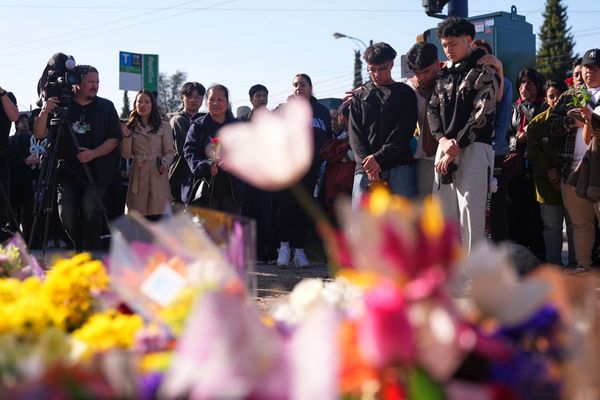
A SORE, swollen armpit and upper chest area after having the COVID vaccine booster - a phenomena dubbed by some as "Pfizer boob" - has been flagged as one of the most common "adverse events" reported to the Therapeutic Goods Administration (TGA).
In its first vaccine safety report of the year, the TGA said the majority of about 600 "suspected" adverse events reported after a third dose or booster was swollen lymph nodes - also known as lymphadenopathy.
"Swelling may be noticed near the injection site, for example in an armpit, within a few days of vaccination," the TGA report says.
"This normally resolves without treatment after a week or so. People should seek medical attention if swelling persists for more than a few weeks to rule out other causes."
Associate Professor Nathan Bartlett, a viral immunologist from the University of Newcastle, said many people experienced redness, pain and swelling in the armpit after having other vaccines too - and it was a very normal and known "adaptive" immune response.
He said when a COVID-19 vaccine was injected into the arm, the body began to build "spike proteins" which were carried to the lymph nodes. The site of injection essentially became the focal point of the immune response to the vaccine.
"There are immune cells and muscle cells that take up the vaccine components which can cause inflammation, and that then alerts the immune system to the fact that something is going on there," he said.
"The immune system begins to localise to the injection site, that's why the most common side effect following vaccination is soreness of the arm and redness, and even itching at the point of injection. That is where the immune response to the vaccine is really initiating."
Lymph nodes help the body tackle infections.
The "axillary" lymph nodes under the armpit and around the side of the chest "drained" the arm of the injection site and this increase in traffic and cell movement in the area could lead to "quite noticeable" inflammation and swelling.
"It is all part of a normal adaptive response which ultimately gives you the long lasting protection we rely on for a vaccine," he said.
It is all part of a normal adaptive response which ultimately gives you the long lasting protection we rely on for a vaccine.
Associate Professor Nathan Bartlett
Associate Professor Bartlett said anecdotally, people reported feeling some side effects like fatigue, fever, muscle aches and headaches after their first dose of AstraZeneca, while similar reactions to Pfizer tended to happen after the second dose.
When it came to boosters, every response was "unique".
Similarly to the side effects of the first two doses, there was no real rhyme or reason why some people experienced fatigue, muscle aches, cold chills, "Pfizer boob" and nausea after their COVID vaccine, and some did not.
"There are lots of things that can affect how your immune system reacts on any given day," he said. "It does change markedly from person to person."
But he said there was some "reasonably solid data" around having a different booster vaccine.
"So if you had Pfizer for the first two doses, then having Moderna for your booster can give you that variety - a bit more broader coverage and a little more durable protection," he said. "But it's not a huge difference and getting three doses of the same mRNA vaccine is perfectly fine."
Israel has begun administering fourth doses of the COVID-19 vaccine due to waning immunity, but Professor Bartlett said it was too early to say whether we would soon need to consider a second booster shot too.
The true extent of the Omicron outbreak was unknown after testing and surveillance systems buckled under rapidly rising case numbers.
"The wheels were in motion based on a trajectory for the Delta variant, and of course that was completely derailed by Omicron which changed the whole equation as numbers skyrocketed," he said. "We'll play the ball as it lies once we see where we're at in three or four months."







